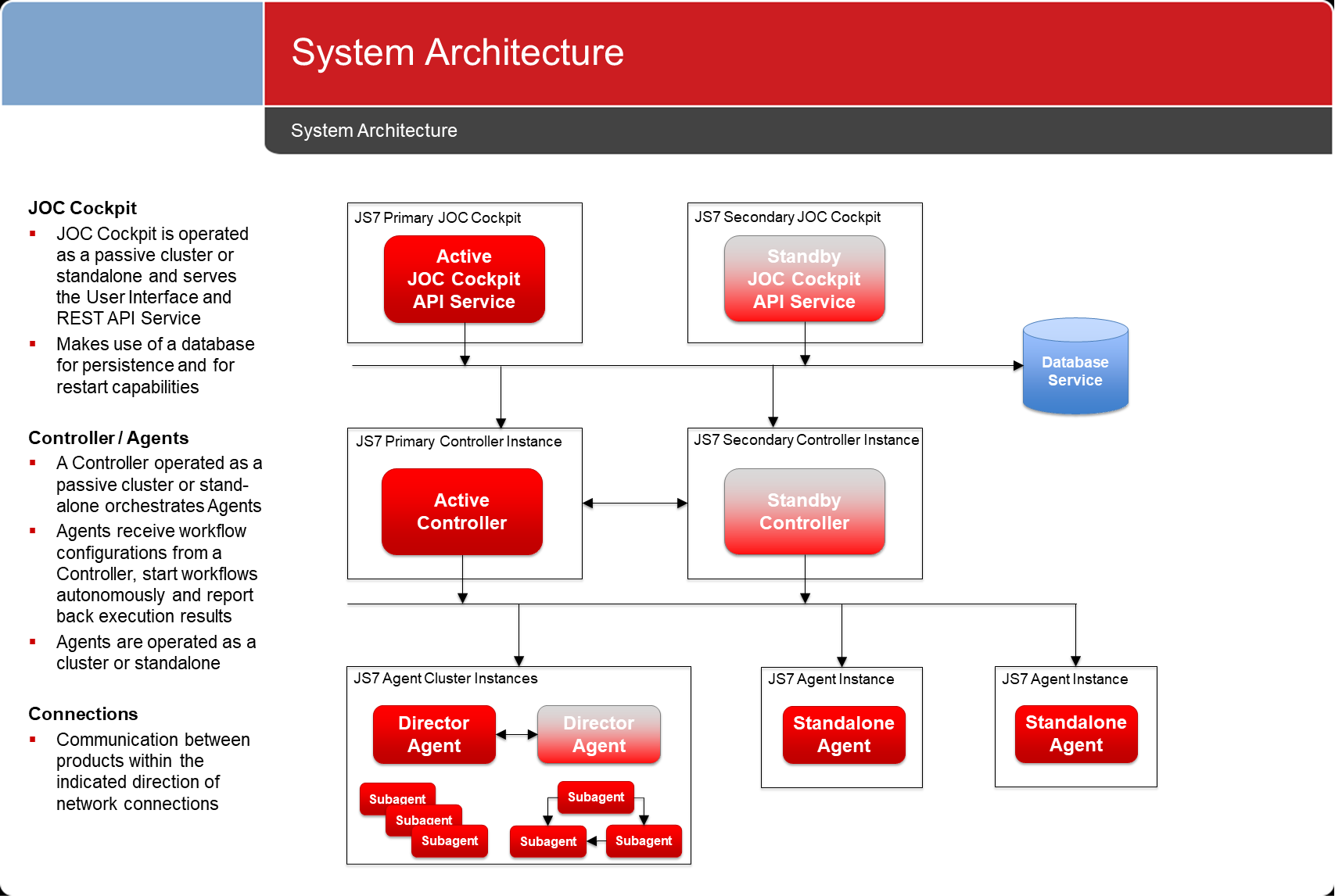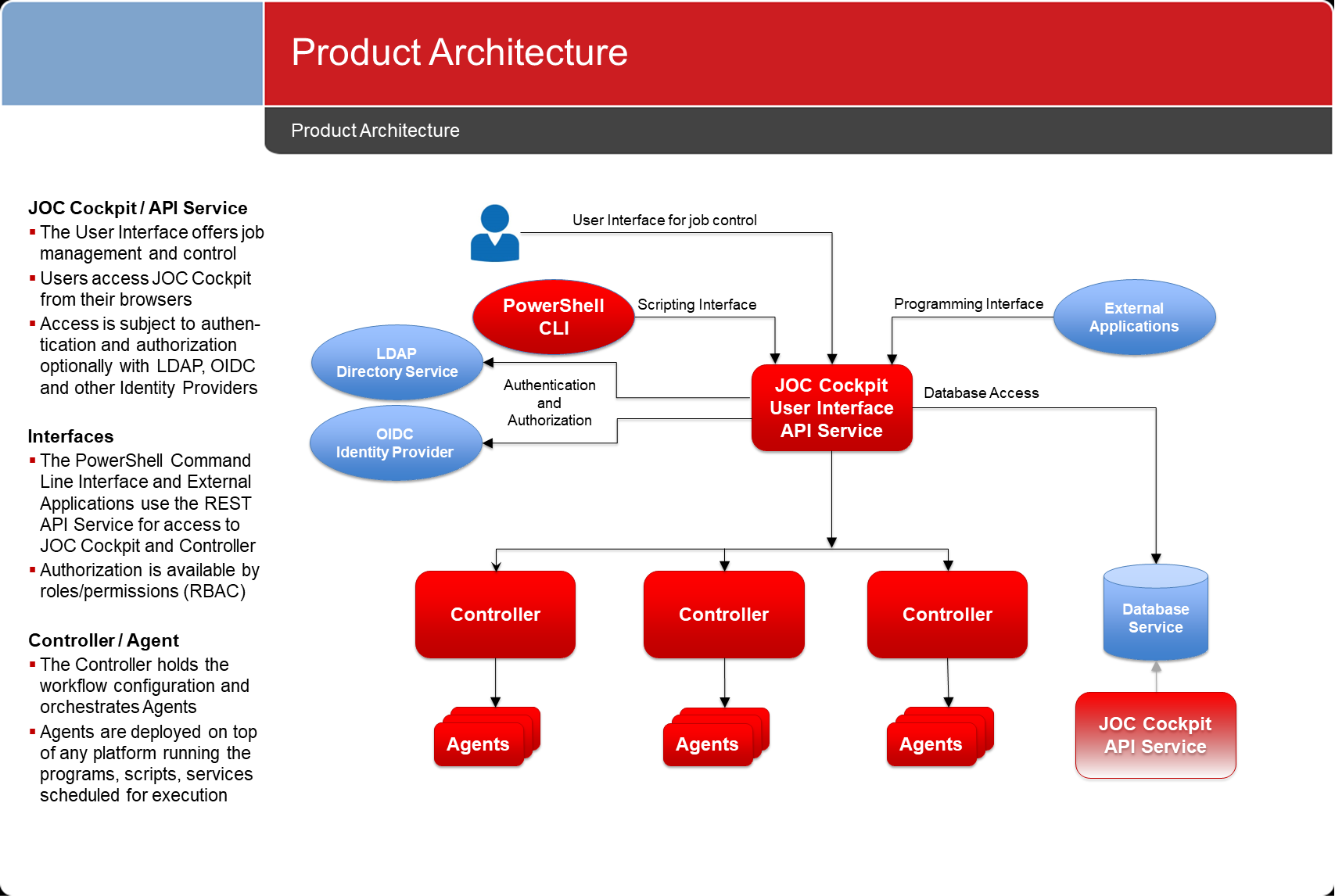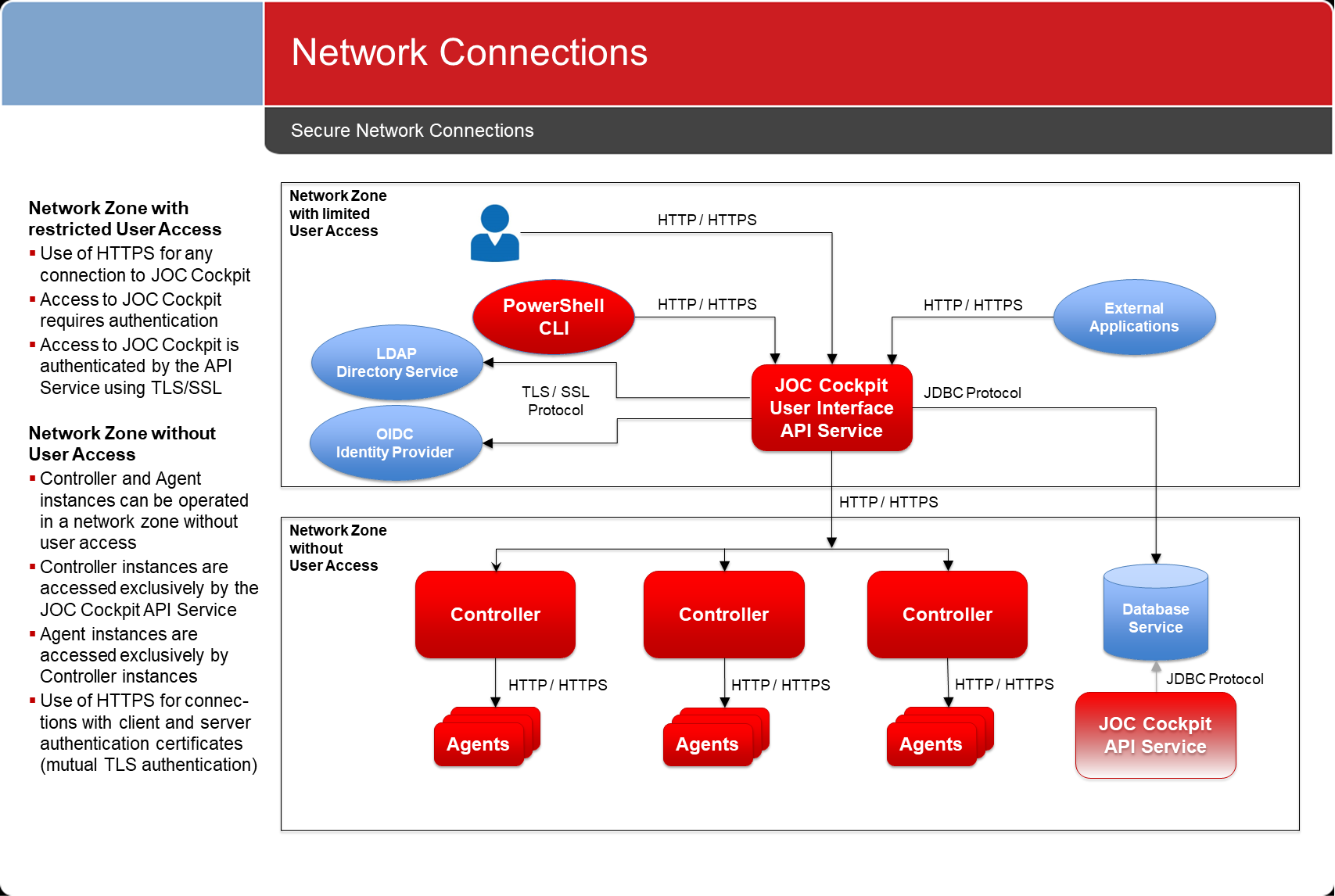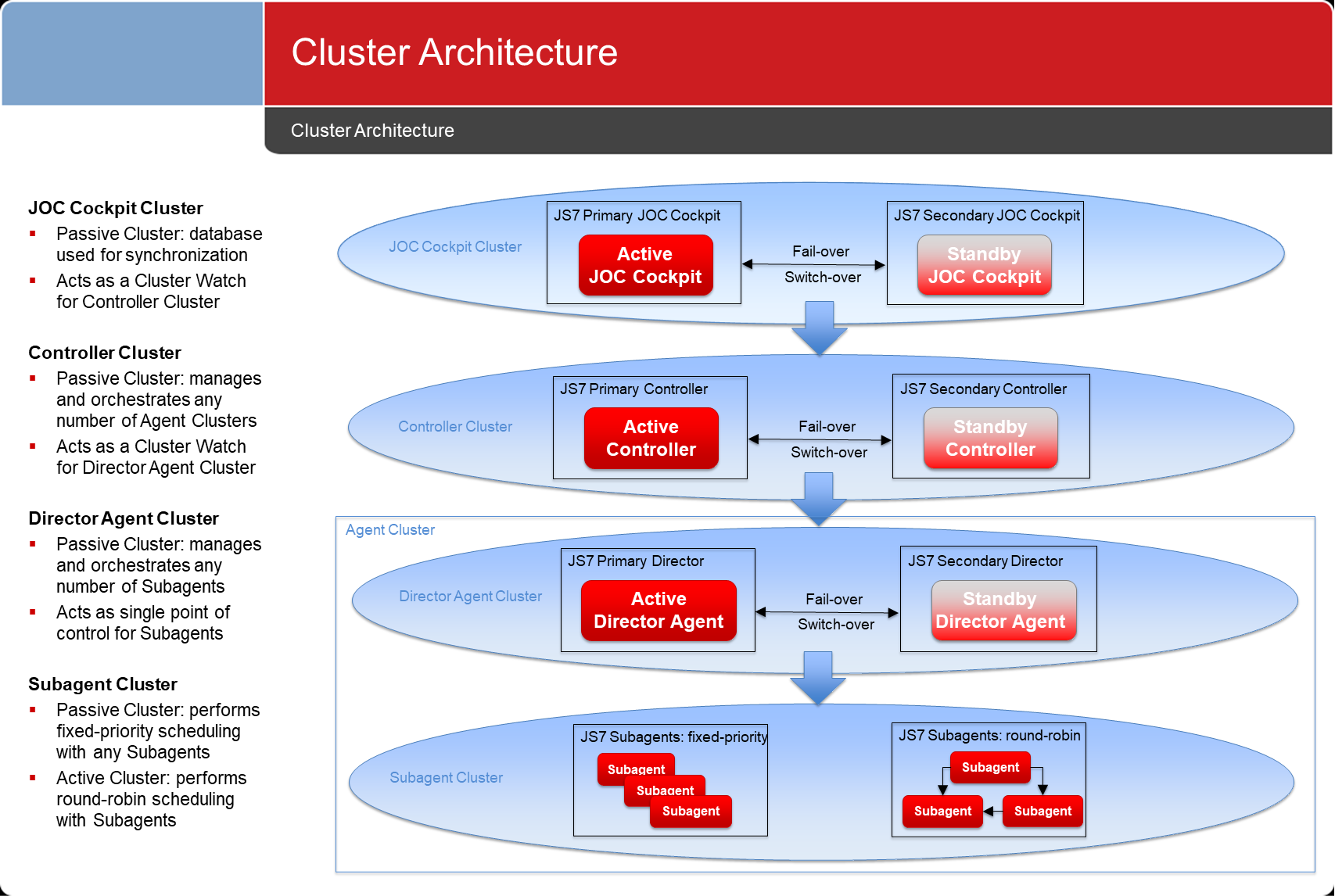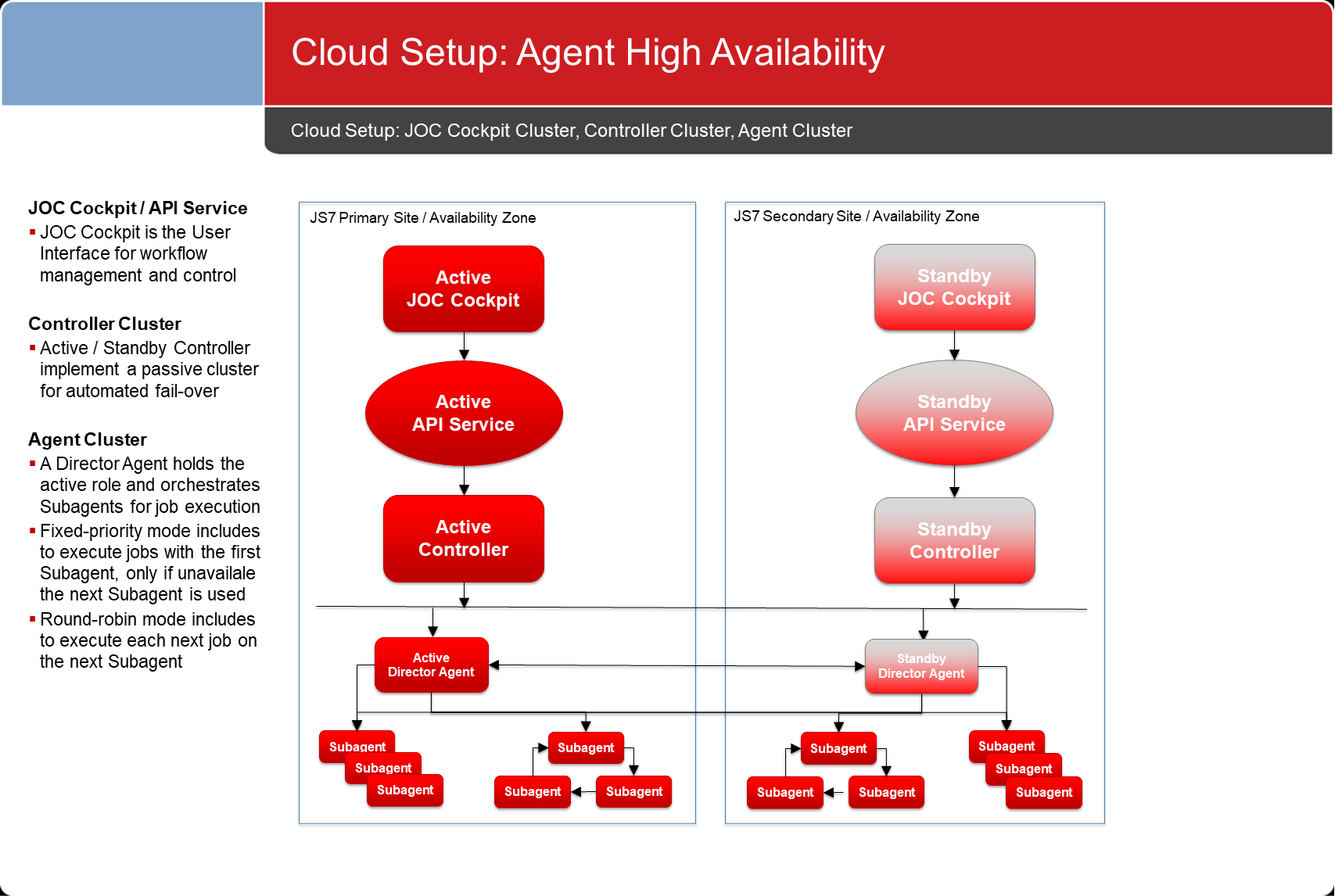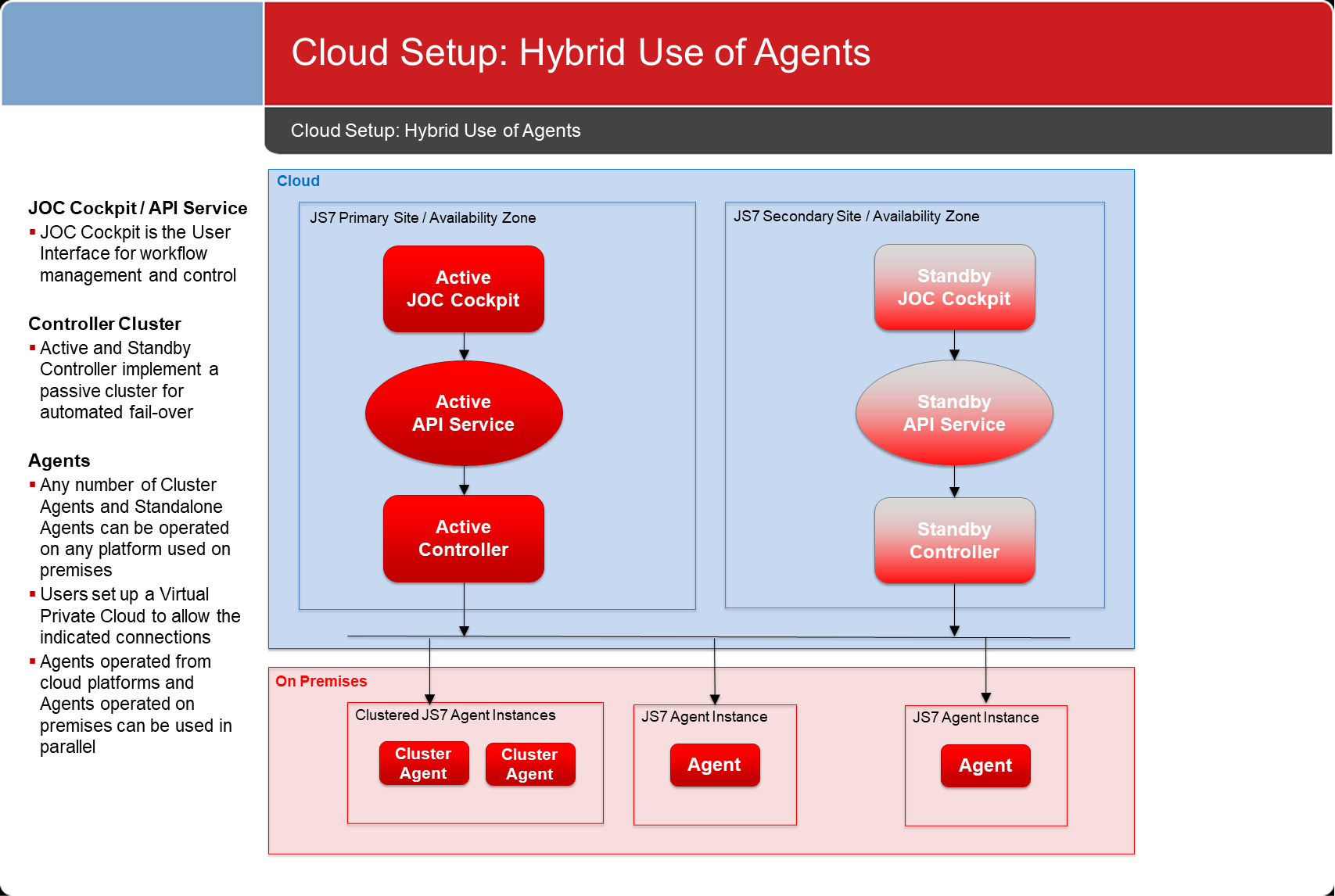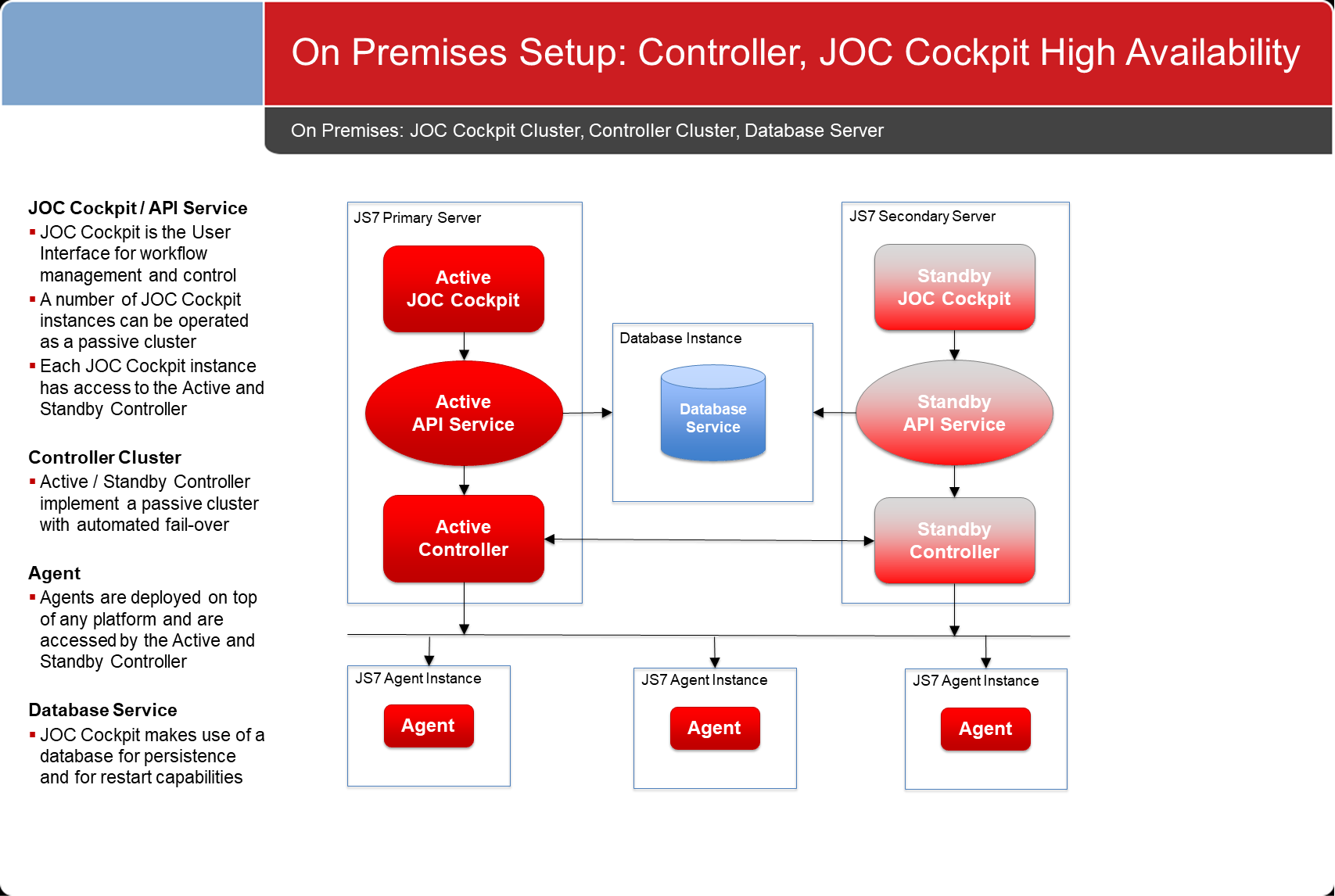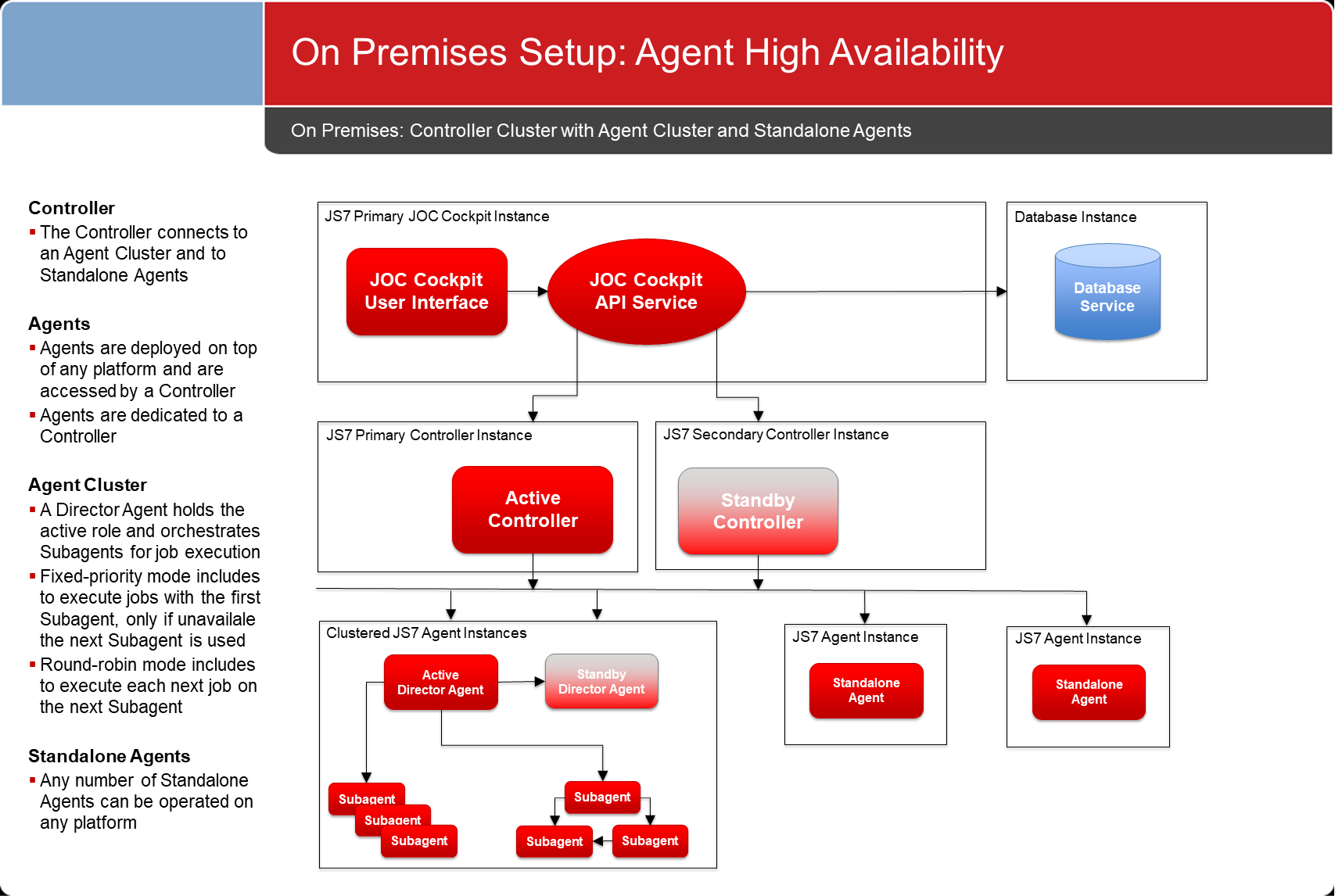Page History
| SEO Metadata | ||
|---|---|---|
| ||
JS7 implements offers a resilient system architecture that allow allows to continue operation in case of failure of individual componentsoutages |
| Table of Contents |
|---|
Introduction
- The system architecture describes:
- system boundaries
- componentsproducts
- platforms
- setup scenarios
| Anchor | ||||
|---|---|---|---|---|
|
- Download: JS7_JobScheduler_System_Architecture.pptx
- Download: JS7_JobScheduler_System_Architecture.pdf
- Download from Use the links above if the document the document below does not display in your browser.
|
...
System Architecture
The JS7 makes use of includes the following componentsproducts:
- The JOC Cockpit, which is used to manage the inventory JS7 - Inventory of scheduling objects, to monitor and to control workflow execution and to access the JS7 - History.
- The Controller, which is used to orchestrate Agents, to pass orders for workflow execution to Agents and to deploy workflows and the JS7 - Daily Plan to Agents.
- Agents, which are dedicated to a Controller and are used to execute workflows and jobs. Agents act autonomously for workflows that execute any all included jobs with the same Agent.
All JS7 components products can be clustered:
- JOC Cockpit and Controller can each implement a passive cluster with an active node and a standby node.
- Agents can be operated standalone or as instances of a JS7 - Agent Cluster that which implements active-passive or active-active scheduling.
...
| Anchor | ||||
|---|---|---|---|---|
|
The components products interact as described in the slide below:
- The JOC Cockpit implements:
- the user interface for browser access by browsers.
- the JS7 - REST Web Service API that which:
- is connected to a database and which persistently stores the inventory and the history of workflow executions.,
- performs any all operations to manage Controllersfor managing Controllers,
- optionally is available from dedicated API Servers.
- The Controller connects to Agents:
- for JS7 - Deployment of Scheduling Objects of workflows,
- to forward orders for workflow execution,
- to receive execution results from Agents.
- The Agents:
- execute workflows and jobs,
- return execution results and log output to the Controller.
...
| Anchor | ||||
|---|---|---|---|---|
|
Network connections are only established in the directions indicated directions only.
- Any connections are unilateral to simplify network access.
- Connections can be secured by TLS/SSL certificates.
| Anchor | ||||
|---|---|---|---|---|
|
The JS7 offers a 4-tier architecture with any JS7 products available for clustering:
- Each tier acts as a Cluster Watch in case that the underlying tier requires an arbitrator to decide about the active/standby role.
- Each tier works asynchronously and does not rely on availability of the next tier. This includes absence of any single point of failure.
- The Agent Cluster is represented from both a Director Agent and any number of Subagents that execute tasks.
- This provides better autonomy to the Agent Cluster as Director Agents can be operated more close to Subagents in the network.
- Agent Clusters can execute workflows autonomously provided that jobs and dependencies map to Agents in the same cluster.
| Anchor | ||||
|---|---|---|---|---|
|
Consider attached slides JS7_JobScheduler_System_Architecture.pdf for further setup scenarios.
Cloud Setup
A high availability setup includes to cluster JOC Cockpit, Controller and Agents. Products are deployed to separate availability zones like this:
A hybrid approach suggests to use a cluster of JOC Cockpit instances and Controller instances from the Cloud. Agents can be integrated from the Cloud and from environments on premises:
On Premises Setup
A cluster of JOC Cockpit instances and Controller instances can be used like this:
Standalone Agents can be used and clustered Agents can be used for high availability like this:
Summary
- ProductsComponents
- JOC Cockpit: manages the workflow configurationand job inventory, monitors and controls workflow execution
- Controller: orchestrates Agents, manages workflow execution
- Agents: execute start workflows autonomously and return the execution history and log output
- Operation
- JOC Cockpit can be operated in the following modes:
- as a standalone instance,
- as a cluster with one active instance and any number of standby instances.
- The Controller can be operated:
- as a standalone instance,
- as a cluster with one active instance and one standby instance.
- Agents can be operated:
- as a single instance,
- as a passive cluster with one active instance and any number of standby instances,
- as an active cluster with any number of active instances.
- JOC Cockpit can be operated in the following modes:
- Network Connections
- JOC Cockpit connects to Controller instances and connects to a database
- Controllers connect to Agents
- Network connections are firewall friendly, a single connection is initiated established between each componentproduct
- Platforms
- JOC Cockpit: WindowsContainer, Linux, Windows
- Controller: WindowsContainer, Linux, Windows
- Agent: Container, Linux, Windows, any platform that provides a Java Virtual Machine
- Setup Scenarios
- Cloud
- JOC Cockpit and Controller High Availability
- Agent High Availability
- Hybrid Use of Agents
- On Premises
- Standalone Server
- Controller High Availability
- Controller and JOC Cockpit High Availability
- Multi-Client Capability
- Agent High Availability
- Cloud
